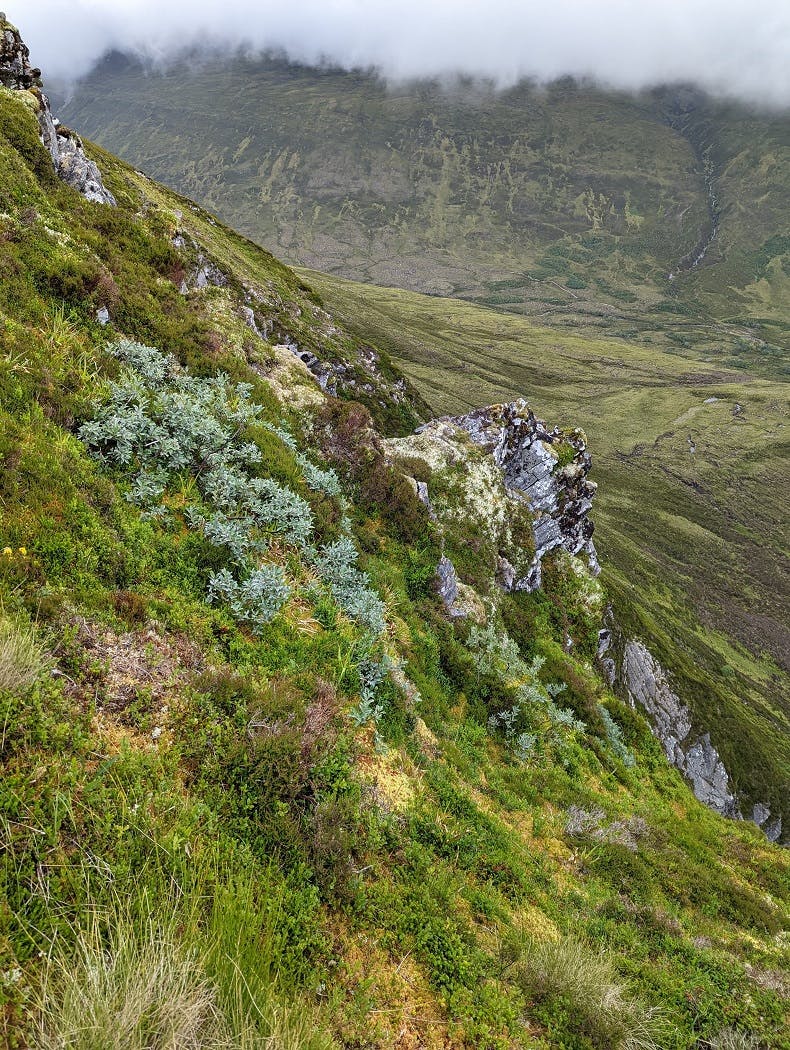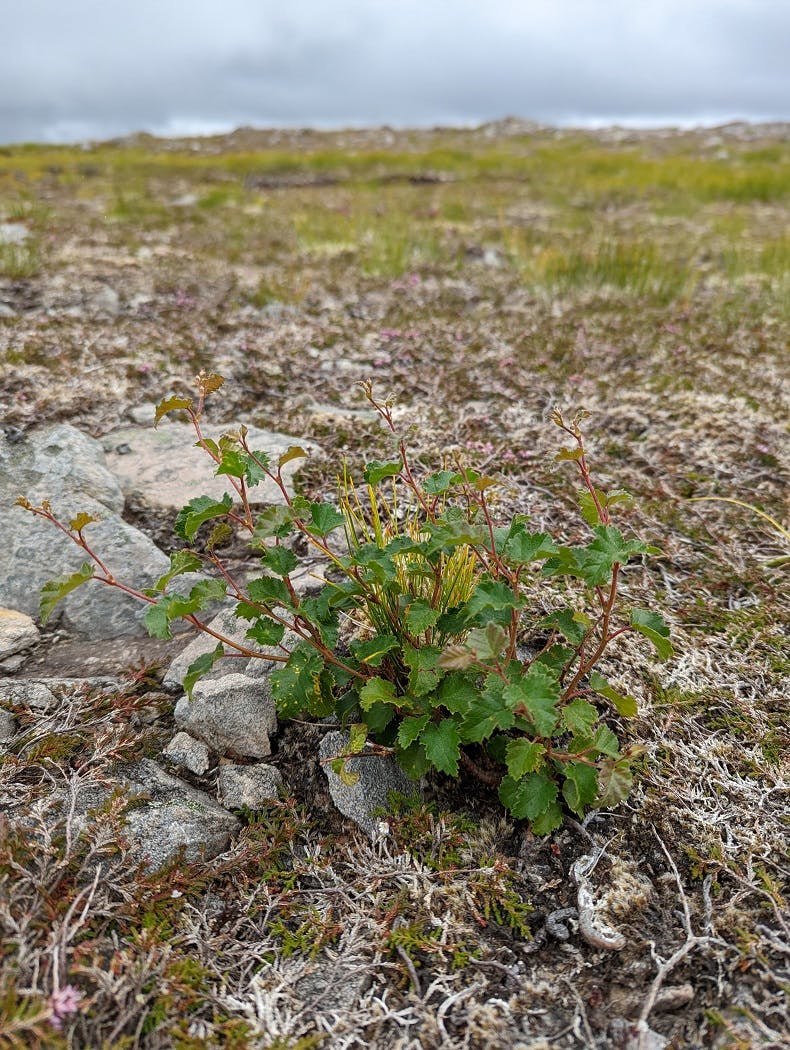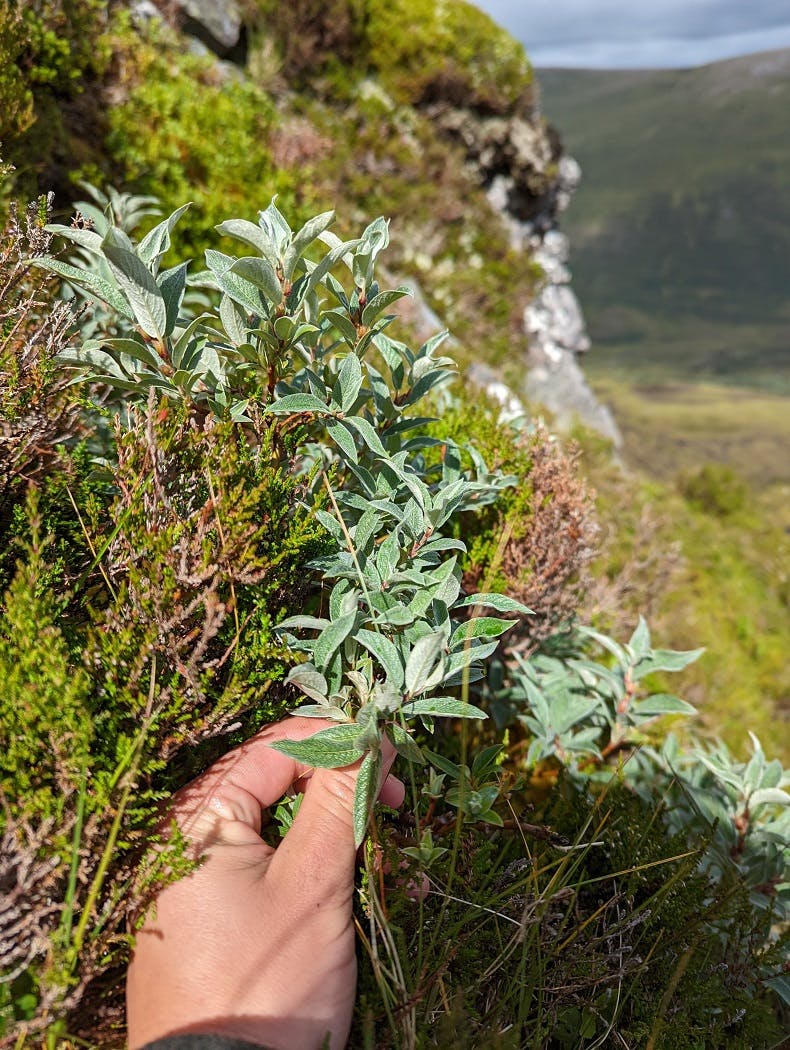- Status: Implemented
In Scotland, dense forests of birch, pine, oak and other species cover the bottom of the glens (valleys) and hillsides while alpine heath species carpet the tops of the hills and mountains. The transition between these two zones is pretty obvious because the missing link – the mountain woodland – is almost entirely missing. We should see forests grading into scattered trees and shrubs before gradually disappearing up the mountain. This habitat provides shelter and food for many species and could be important for mitigating the impacts of climate change. It’s rare in Scotland but it’s also understudied, usually restricted to inaccessible cliffs and gullies. We are embarking on a long-term project to find previously undiscovered remnants of mountain woodland, with the ultimate aim of restoring this habitat.
The Ecosystem
Mountain woodland – also known as montane scrub – is comprised of montane specialists, such as dwarf birch, prostrate juniper and montane willows, as well as non-specialists growing in a dwarf and often krummholz (meaning twisted wood) form, such as downy birch, rowan, aspen.
Mountain woodland provides important shelter and foraging areas for upland birds, such as ring ouzel and black grouse, and mammals, such as mountain hares. Mountain woodland also supports a range of plants and invertebrates, such as beetles, sawflies, moths. Despite their small stature, these wee trees and shrubs provide important ecosystem services, such stabilising and improving soils, improving water quality, and water retention.

Mountain Woodland Species
Willows
- Mountain willow (Salix arbuscula)
- Woolly willow (Salix lanata)
- Downy willow (Salix lapponum)
- Dark-leaved willow (Salix mysinifolia)
- Tea-leaved willow (Salix phylicifolia)
- Net-leaved (Salix reticulata)
- Whortle-leaved (Salix myrsinites)
- Creeping willow (Salix repens)
- Dwarf willow (Salix herbacea)
Juniper
- Upright juniper (Juniperus communis communis)
- Prostrate juniper (Juniperus communis alpina)
Dwarf birch (Betula nana)
Common species in dwarf or krummholz form
- Goat willow (Salix capraea sphacelata)
- Eared-willow (Salix aurita)
- Downy birch, (Betula pubescens)
- Pine (Pinus sylvestris)
- Oak (Quercus petraea)
- Rowan (Sorbus aucuparia)
- Rock whitebeam (Sorbus rupicola)
- Hazel (Corylus avellana)
- Aspen (Populus tremula)
The Threats
Montane scrub, especially montane willow scrub, is one of the rarest habitats in the UK. It is restricted to a handful of sites across Scotland. The populations that remain are small, typically consisting of no more than a few individual plants, and isolated to cliffs and crags. Because of this, they rarely form part of a natural forest to alpine zone continuum. Most mountain willows are scarce and one in particular, woolly willow, is endangered and at risk of extinction in Scotland.
The major threats to this ecosystem are overgrazing, predominantly by deer and sheep, and burning. Grazing by herbivores prevents the natural regeneration of mountain woodlands, while very heavy grazing on individual plants can be lethal. Muirburn (the practice of burning off old growth on a heather moor to encourage new growth) also prevents the woodland’s natural regeneration and can wipe out the last remaining plants of an entire population.
Climate change is also a significant threat to this ecosystem, which is comprised of cold-adapted species that benefit from harsh winters with plenty of snow cover. The snow cover helps protect the thinly bedded roots from frost and protects plants from browsing during the winter. Cold temperatures are also essential for successful seed production and germination for some species, such as juniper and dwarf birch.
Unlike many tree species, all mountain willows are dioecious (which means that an individual has either male or female reproductive organs). Some populations are comprised of a single sex, which means they are unable to reproduce by seed. This can be detrimental to genetic fitness and threatens the long-term viability of many populations.

Our Intervention
In the summer of 2022, we began an informal survey to locate and map any remaining populations of montane scrub, including montane specialists and high-altitude birch, pine, rowan etc. at our project area in the Scottish Highlands. Working alongside the team at Alladale Wilderness Reserve we have been out surveying the high-tops, prioritising areas above 600m that are somewhat inaccessible to red deer.
Searching for these species is a challenge, because areas inaccessible to deer are usually inaccessible to humans as well (unless you’ve got a rope). We are currently working to scale up this work to other areas in Scotland, and hope to carry out some restoration work. This will likely take the form of propagating and planting out new populations, as well as bolstering existing ones with new genetics.

Our findings so far
We have already identified some promising areas, where juniper and high-altitude aspens, birch and rowans are thriving in the absence of herbivores. The major discovery so far, however, has been the discovery of a significant population of downy willow on a steep north-facing crag above Lochan Pollaig in Glen Alladale. Due to the challenges of this particular site, we have been unable to survey the site properly, and therefore do not know how many plants there are, and what other species may be present.
We are planning to return in the future, with an experienced climbing team, to access and survey the site safely.

Sources & further reading

- “Missing link” - John Muir Trust
- “MONTANE SCRUB RESTORATION PROJECT: GUIDANCE FOR THE RESTORATION OF MONTANE SCRUB” - Millennium Forest for Scotland